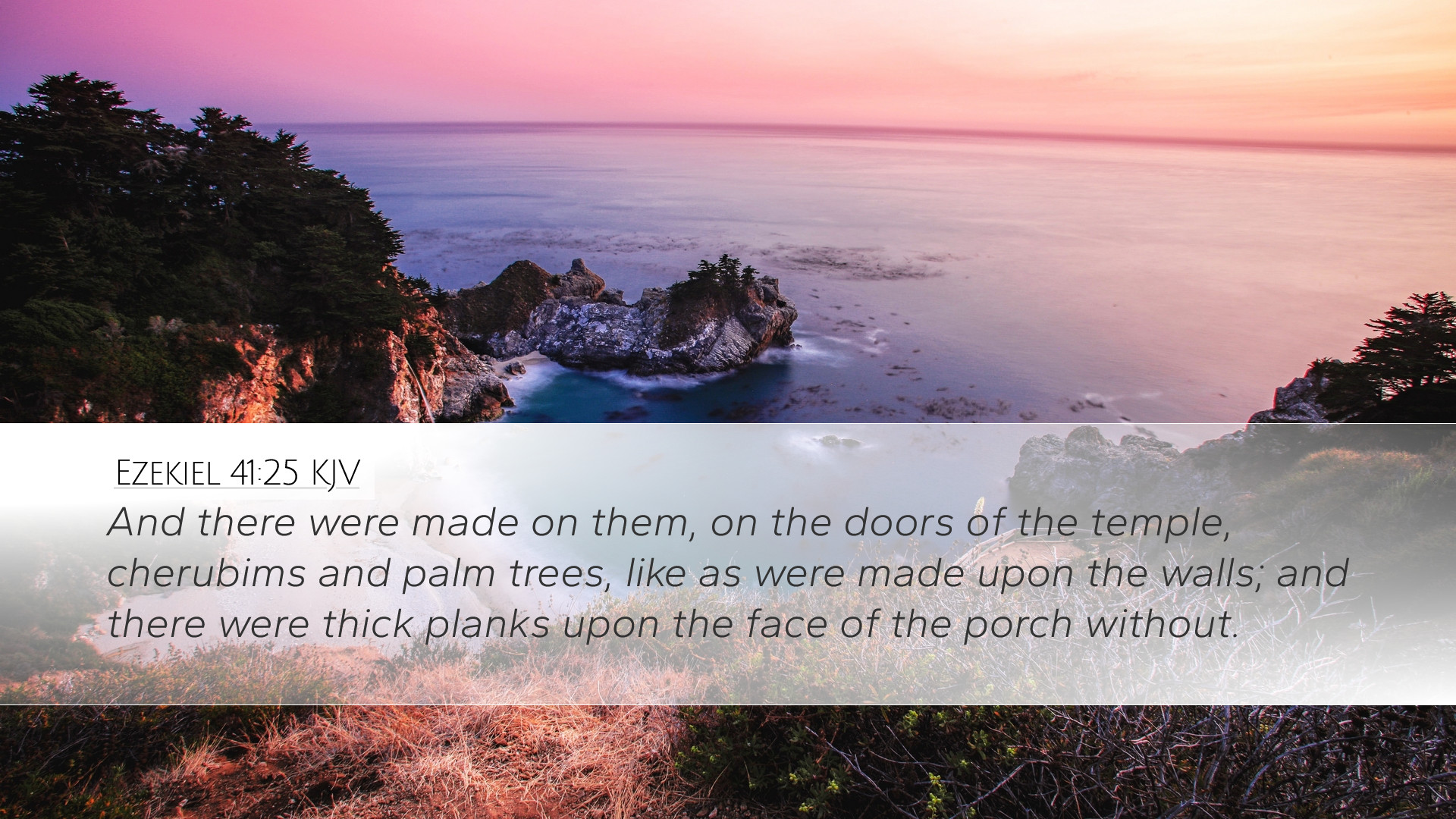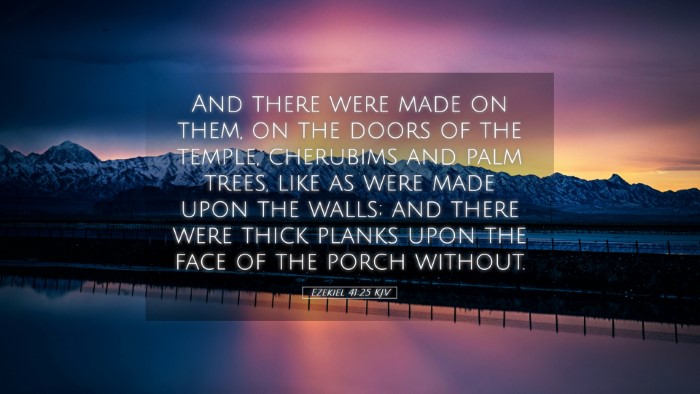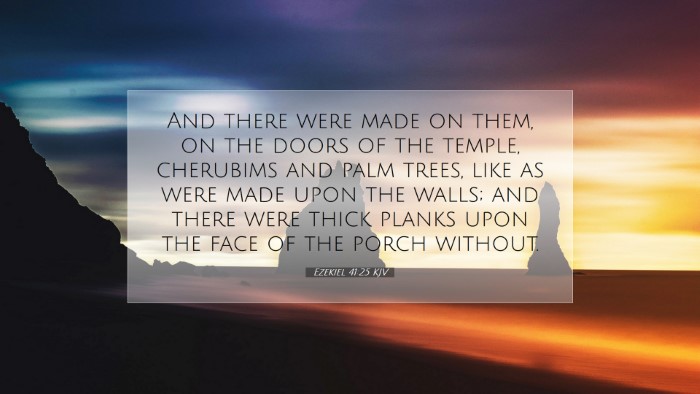Bible Commentary on Ezekiel 41:25
Ezekiel 41:25 reads: "And the doors of the chambers were two-leaved, two turning leaves; two for one door, and two for the other door." This verse, situated within a detailed description of the dimensions and structure of the temple, provides rich material for spiritual and theological reflection.
Contextual Analysis
The verse is part of Ezekiel's vision of the restored temple, which speaks to God's presence among His people. Ezekiel is tasked with focusing on a future temple that will serve as a sign of God's covenant with Israel. Understanding the historical and prophetic context is crucial for interpreting this passage.
Commentary Insights
Matthew Henry
Matthew Henry emphasizes the significance of the architectural details of the temple. He notes that the description of the doors indicates completeness and functionality, reflecting the orderliness of God's worship. Henry highlights that the design of the doors—with their two leaves—suggests access to God. The design serves a dual purpose: it represents both barrier and invitation into the sacred space. He ties this observation to the notion that through Christ, believers have direct access to the Father, symbolizing the broader theme of redemption and communion with God.
Albert Barnes
Albert Barnes provides a practical interpretation of the temple's design, suggesting that the double doors symbolize openness and the accessibility of worship. Barnes explains that the two-leafed doors represent the dual nature of Christ as both God and man, mediating between Heaven and earth. He elaborates that the physical manifestation of these doors speaks of spiritual truths—indicating the way into God's presence through faith and the importance of approaching God with reverence. Furthermore, Barnes highlights the significance of the details, asserting that the temple plan embodies God's promise to dwell among his people.
Adam Clarke
Adam Clarke offers a more detailed architectural critique, interpreting the structure of the doors as significant in the wider context of sacred architecture. He suggests that the specifics of the doors reflect both functionality and aesthetics, signifying the temple's importance as a place of divine encounter. Clarke remarks on the importance of craftsmanship in temple construction, drawing a parallel to the care and precision required in spiritual endeavors. He posits that the doors exemplify how the physical aspects of worship are infused with spiritual meaning, underscoring the invitation to approach God with a heart prepared for intimacy.
Theological Implications
The exploration of Ezekiel 41:25 through these commentaries reveals profound theological implications:
- Access to God's Presence: The double doors signify that God desires a relationship with His people, inviting them into worship and communion.
- Symbolism of Completion: The two-leaved design reflects the completeness of God’s provision for salvation and relationship, showing that God's plans are meticulously designed.
- Jesus Christ as Mediator: The artistic and functional design of the doors draws a parallel to Christ who opens the way to the Father, emphasizing His role in salvation history.
- Worship as a Community Experience: The architecture invites a community of worshipers into a shared experience of grace and fellowship with God, reinforcing the communal aspect of God’s covenant.
Practical Application for Ministries
For pastors and church leaders, Ezekiel 41:25 serves as a reminder to prioritize accessibility in worship settings. It challenges congregations to consider how their worship environments encourage or inhibit access to the divine. Here are practical applications:
- Evaluate church layout: Ensure that the physical spaces reflect a welcoming atmosphere for worship and prayer.
- Teach on the nature of Christ: Emphasizing Christ's role as the mediator can deepen congregational understanding and relationship with God.
- Encourage communal worship: Foster an environment where the church community is invited into dynamic worship experiences that reflect God's desire for relationship.
- Spiritual readiness: Teach about preparing hearts to approach God reverently and expectantly, recognizing the significance of entering His presence.
Conclusion
Ezekiel 41:25 provides more than a mere architectural description; it serves as a profound reflection on God's desire for relationship, access, and divine order. The insights from Matthew Henry, Albert Barnes, and Adam Clarke combine to offer a comprehensive view that resonates with spiritual and practical dimensions of faith. As such, this passage continues to be relevant for scholars, theologians, and practitioners who seek a deeper understanding of God’s plans for His people and the means by which they can access His divine presence.


